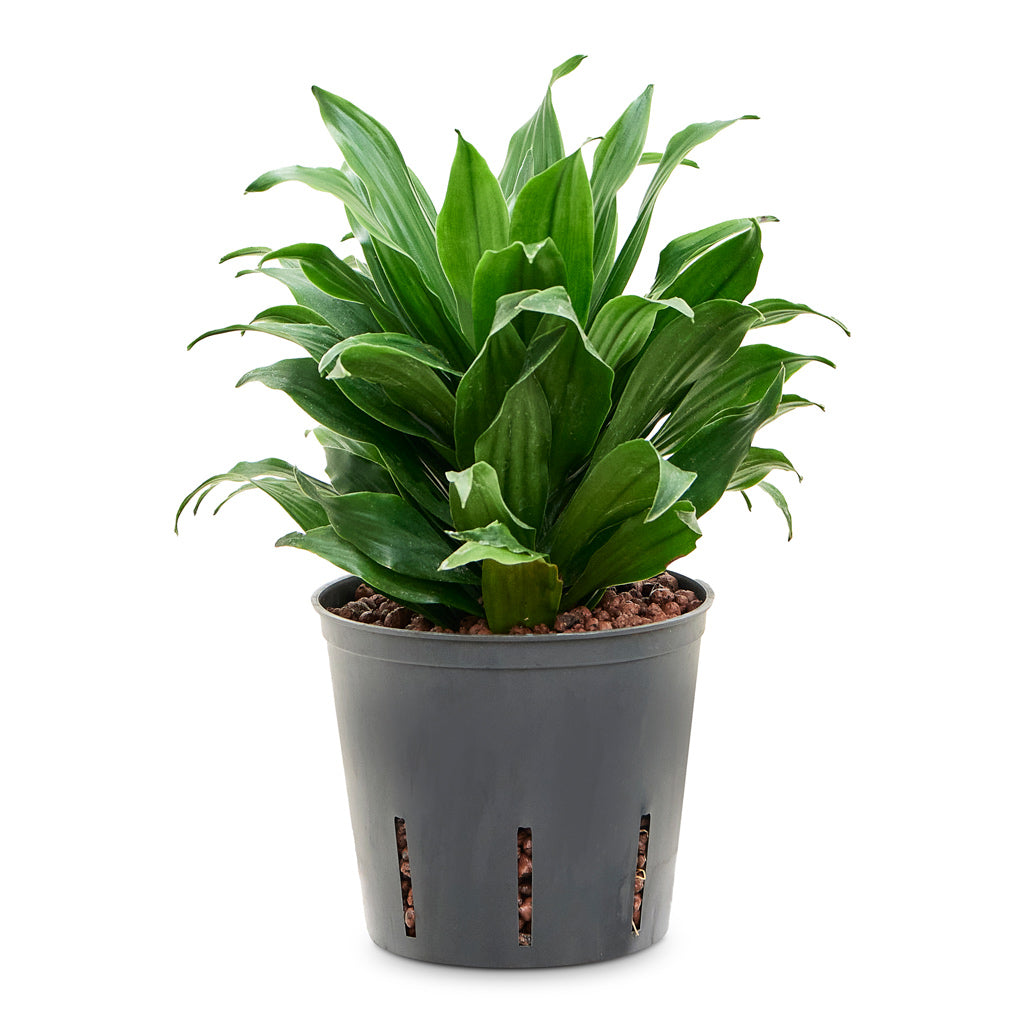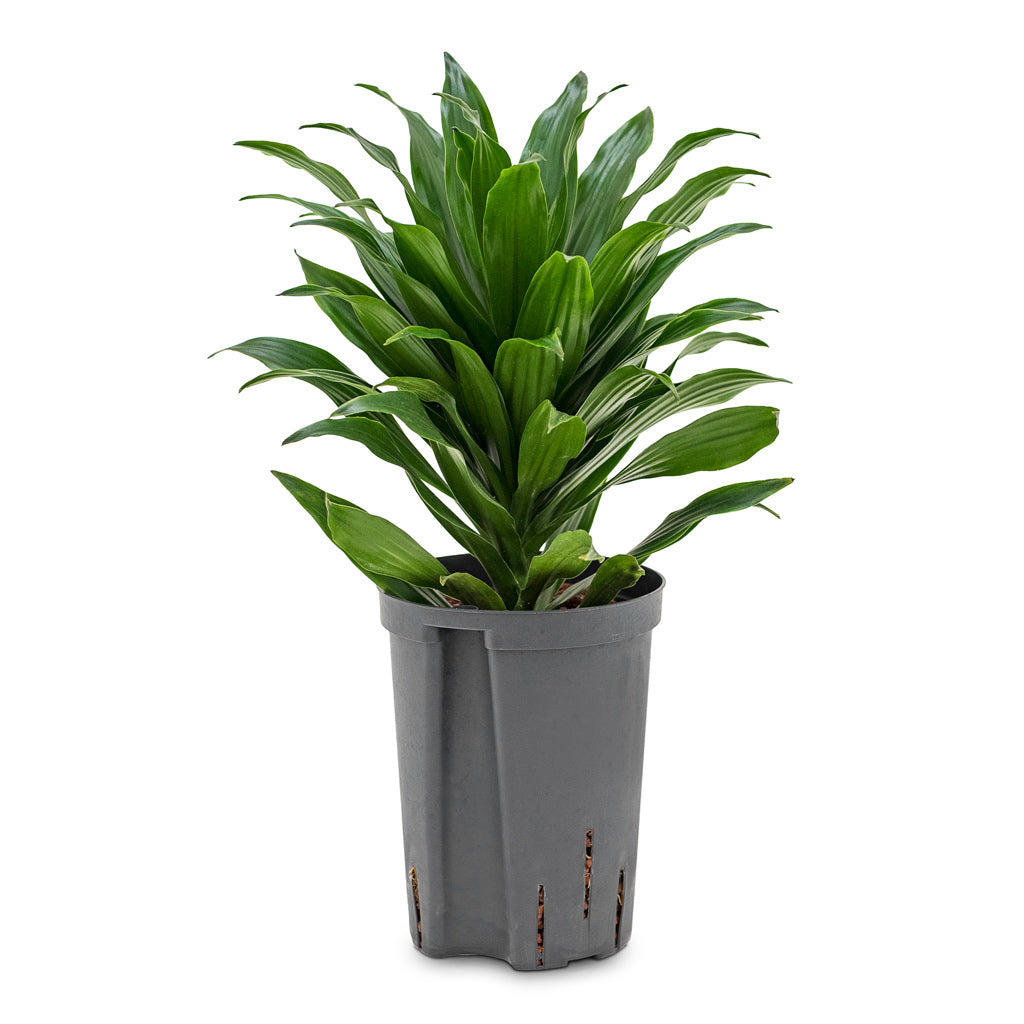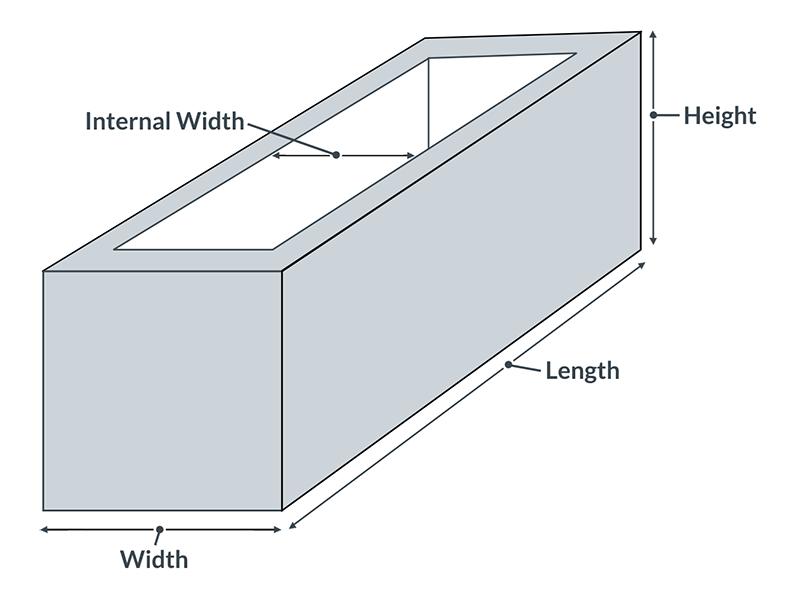



HydroCare plants are planted in hydrogranules instead of using soil.
Hydrogranules are manufactured from clay pellets that are baked at high temperatures to make them expand, a process a bit like making popcorn.
The open structure of the hydrogranules allows water and nutrients to be stored and released, creating the optimum conditions for indoor plants to thrive as well as simplifying maintenance requirements.
HydroCare plants have a lot of benefits over soil plants:
Moisture Levels: The open structure of the hydrogranules creates optimum moisture levels around the roots of the plant. Water stored in hydrogranules below the roots will be gently drawn up through capillary action for the roots to absorb. No more dried out roots or root rot.
Watering: A water meter on the side of the grow pot indicates the amount of water left in the hydrogranule reservoir below the roots. When it reaches the minimum level wait for 1-2 weeks then simply top it back up to the optimum level. The plant will pull water from the hydrogranules according to its needs so there is no risk of over or under watering and watering is less frequent.
Root Health: The open structure of our pH neutral hydrogranules allows air to circulate around the roots keeping them healthy and because they do not compact over time there is no need to top up.
HydroCare plants are adapted to these conditions and develop a smaller more fleshy root system making the plant more hardy and in a smaller grow pot meaning you have a wider choice of decorative planter styles. The requirement to repot as the plant grows is also significantly reduced.
Pest Control: Hydrogranules are an inert medium that is less susceptible to pests, fungi and bacteria which means healthier plants with less risk of disease.
When you buy a HydroCare plant, you need a few other bits and pieces to assemble the plant in your chosen planter or plant pot. Think of getting a HydroCare plant as a solution that needs to be assembled rather than just a plant.
We have a simple step by step video guide to assembling the HydroCare plant in a plant pot but essentially you need 5 things for hydro heaven:
1. The HydroCare plant in its hydroculture grow pot.
2. A water meter to slot into the side of the hydroculture grow pot.
3. A waterproof plastic liner for your decorative pot. Each HydroCare plant has an associated hydro kit that includes a waterproof liner to fit the hydroculture grow pot of the plant and a size tip to help you choose a decorative pot that will accommodate the specified waterproof pot liner for the plant.
4. Extra hydrogranules to fill around the grow pot and make a nice finish on top.
5. Hydroculture plant food, specifically formulated for use with hydrogranules.
Soil-free feathery fragrans foliage. Compacta, as the name suggests, is a compact version of Dracaena fragrans. It has a busy growth pattern made up of a dense clump of glossy ribbon-like dark green leaves. This is one variety of Dracaena whose leaves are not variegated; instead, you get a wonderfully rich and deep glossy green leaf, with deep veining, similar to the Aspidistra. Compacta is a simple yet stylish option and looks stunning in modern, contemporary settings. Dracaena Compacta likes bright conditions and enjoys slightly raised humidity. Like all Dracaena, it helps purify the surrounding air.
Dracaena fragrans Compacta Care & Info Guide
Horty Hints
Manage and Maintain! Inconsistent levels of water, temperature and light can damage some leaves beyond repair. Thankfully these can be torn in half lengthways and pulled out.
Rough Round the Edges! Brown leaf margins is often a symptom of too much fertiliser. If you don’t fertilise, it could be the fluoride in the water. Fix it with filtered water.
Tame the Tipping! Blackening of leaf tips and leaf edges is a sign that the plant has had too much water. Allow to dry out in-between waterings.

Light
Dracaena Compacta prefers medium to bright indirect light but, like most Dracaena, can tolerate a vast range of light levels, including partial shade. The darker the plant's leaf, the more shade it can tolerate.
Watering
Allow an extended "dry period" for Dracaena. Water when the meter has been on minimum for 7 to 10 days, allowing the roots to dry out completely.
Temperature
The fragrans Compacta head does best in average household temperatures: between 16-24°C, but can cope with as low as 12°C for short periods.
Humidity
Dracaena are hardy houseplants and will do well in normal room humidity, however they do prefer higher humidity and will benefit from occasional misting.
Feed
Add a Hydroculture liquid feed every 2 to 3 waterings during the spring and summer months.
Height & Growth Rate
Fragrans Compacta is a very slow-growing plant which typically reaches an ultimate height of 1 to 2 metres.Please note: each plant is unique so available heights are approximate and the plant you receive may vary by ±10%.

Toxicity
The sap of the Dracaena Compacta is toxic to animals. It is not considered poisonous to humans but should not be ingested.
Air Purifying
This plant filters airborne toxins such as benzene and formaldehyde, and is part of our clean air plant collection.





